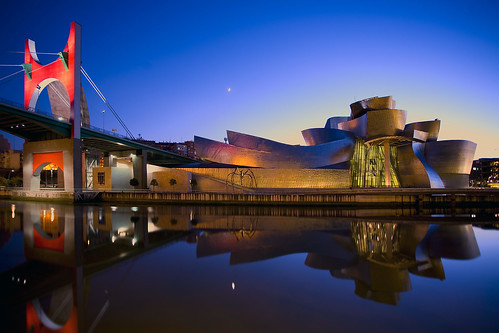Each week we will be focusing on blogs from around the world dealing specifically with urban environments. We’ll be on the lookout for websites outside the country that approach themes related to urban experiences and issues in Toronto.
– – – – – – – – – – – – – – – – – – – – – – –
• Far from oversized Coors light cans, the Utah Transit Authority in cooperation with the University of Utah is running a federally funded bus stop design competition called Next Stop Design. A total of 88 designs and ideas have been submitted so far and are available for rating on their website.
• The idea of a shared space “is more a way of thinking than a design concept,” writes Gary Toth, a veteran Traffic engineer with the New Jersey Department of Transportation. Read his essay about the history of shared spaces, how they came about, what their role is in traffic control and how they can become sites of political contestation.
• An all-elevated $5.29-billion train project in Hawai’i that intends to build 21 stations three stories in the air has local residents concerned about the visual impact of the new commuter line, which would move an estimated 95,000 people a day in and out of urban Honalulu.
• From back alley to beautiful ampitheatre, check out how a simplistic, semi-circular structure transformed an outdoor space in Kolding, Denmark.
• When Frank Gehry was asked by an audience member in a recent speaking event about why iconic architecture so often fails to create good public spaces, the Toronto-born architect dismissed the question with a wave of his hand, “much like Louis XIV might have used to wave away some offending underling,” writes James Fallow of The Atlantic. Was the “starchitect’s” reaction out of character or perhaps revealing of the common failing of landmark architecture to enhance its surrounding public spaces?
photo by Oscar Alonso Algote






4 comments
In Toronto we can see that iconic architecture has resulted in good public spaces like NPS, or the smaller space near the Crystal, which always seems vibrant.
“Was the “starchitect’s†reaction out of character or perhaps revealing of the common failing of landmark architecture to enhance its surrounding public spaces?”
A couple of remarks on this:
-the public space is the expression and result of a process that involves several social partners: architect, the public, public political structure. The quality of the public space is one of the measures of the quality of the democratic process. The incapacity of the public politics to understand it`s importance, the incapacity of the architect to conceive it or the incapacity of the public to demand quality, can all undermine the public space.
-there is large theoretical and practical public space expertise around the world; Frank Gehry would not be the best person to consult. Actually, I would say Louis IV would have been, in a way, more suited-knowledgeable for this matter.
When PPS was here giving a talk, A.R., they suggested “on a scale of one to ten, NPS is a minus ten” and I suggested they didn’t know what they were talking about.
I have always found the PPS folks to be overly didactic in what they believe makes a good public space. I also find the judgements on their website questionable. For me, the whole premise of Starchitecture is a vapid analysis of anything – surely the Louvre and the Pompidou Centre are both Starchitecture projects of their day?